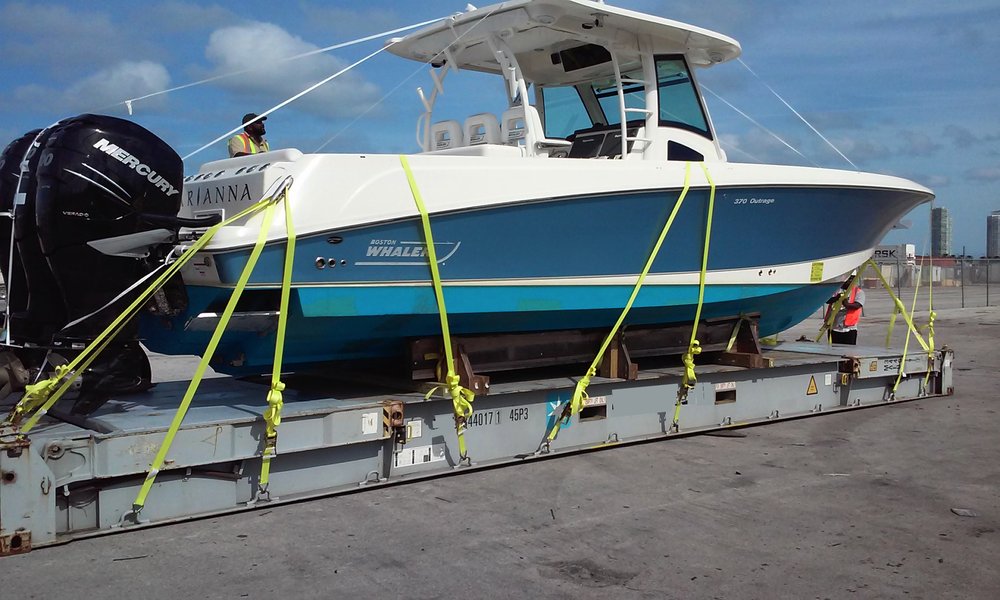Taking your yacht to an exotic destination to enjoy a full experience onboard is a dream come true for many owners. Boat life is both relaxing and exciting, fit for families, partygoers, or couples looking for a romantic retreat.
When it comes to planning your vacation or long-term stay, logistics can be a bit of a challenge, especially when you have to ship your yacht overseas.
Here is all you need to know about shipping a yacht internationally.
How to Accurately Measure Your Boat
Before you start searching for transport companies, you need to have a clear idea of what the dimensions of the cargo are. The quotes you will get from transport companies, and services available for you, depend on how big your boat is. And, of course, it will also be the main factor in determining the cost of the shipping.

Source:gbs-yachttransport.com
Measure the following dimensions:
- Yacht length: measure it from the front of the bow to the middle of the stern. You shouldn’t include extensions (handles, bow sprits, rudders, etc.) in your measurement, as they will likely be removed before shipping.
- Yacht height: measure the distance between the keel and the highest part of the vessel, excluding removable parts.
- Yacht width (beam): measure the widest part of the boat, including railings and attachments.
If you have any doubts about what measurements the transporting company requires, be sure to ask about it when you contact them for a first quote.
What Are Your Shipping Options?
There are several transport options for delivering your yacht to its destination, and choosing the right one for you depends on the points of delivery, the dimensions of your yacht, budget, and other considerations.
Here are the main methods of transportation for yachts as noted on a1autotransport.com:
1. Roll on, Roll off (RO-RO)
Your yacht is loaded on a wheeled trailer, either directly from the water or from land, and the trailer goes on a cargo ship. You can provide your trailer, or rent one from the transporter (it might be included in the final price).
When the company calculates the price, the dimensions taken into account are those of the yacht and the trailer, combined. To reduce your costs, remove any detachable parts of the yacht that might add up to its size.
This is one of the most common options for international yacht shipping.
2. Semi-Submersible Vessel

Source:yatta.club
A very specialized method of transport, the semi-submersible vessel can take the yachts directly from the water and deliver them on the water at the destination. The carrier vessel can drop its deck below the water level, which allows the yachts to position themselves on top. Divers secure the boats in place, and the carrier vessel lifts its deck back above water.
3. Lift-on, lift-off
For bigger vessels that cannot be rolled on the carrier vessel, this option is available. The cargo is lifted on and off the cargo vessel with a crane. The advantage given by this type of transport is that there is no limit to the height of the yacht that would fit the transport since it will be stored on the upper deck.
4. Flat Rack

Source:usainternationalshipping.com
Typically used for over-sized vessels, or when roll-on, roll-off transport is not available, flat rack shipping involves a flat rack for your yacht, on which the boat is loaded and secured in a custom cradle. The yacht is then secured and strapped in place, and loaded on a cargo vessel.
Yachts can be loaded on a flat rack together with their trailer if you need it at the destination. It’s recommended that you winterize your yacht before this type of transportation (we will describe shrink wrapping later in the article).
5. Enclosed Container
If your yacht fits the dimensions of a shipping container (which come in different sizes), this method of transportation might be the best option, cost-wise. As with RO-RO transport, you have to include a trailer in the overall dimensions of the cargo, since your yacht will have to be wheeled in and out of the container.
Variants of container shipping include having an exclusive container just for your boat or sharing a container with other customers.
Preparing Your Legal and Customs Documents
When shipping a vessel internationally, you have to prepare the legal and customs documents in time, and make sure everything is covered.
Depending on what your destination is, the requirements may differ. This is why it’s best to contact the embassy of the country you will be shipping the yacht to, and request a list of all the needed documents for transporting it there and sailing it.
Usually, these documents are: a bill of lading, shipping documents from the transport company, boat title, and bill of sale. Make copies of them, just in case.
How to Prepare Your Boat for Shipment

Source:wideloadshipping.com
When preparing your yacht for transport, it’s important to protect it from possible damage, theft, and accidents. Also, it’s very wise to reduce its size by removing detachable parts and transporting them separately.
Here are the steps you need to take before shipping your boat:
- Secure everything, don’t leave any loose objects around, tape the cabinet doors shut, lock any doors that can be locked, and remove personal items from the boat.
- Take pictures of your boat prior to the transportation, because you might need them in case anything happens and the insurance company steps in.
- Protect your yacht from water damage by covering it in shrink wrap. There are transportation companies offering this service or companies that specialize in it.
- Empty the fuel tank, unplug batteries and turn off any electronic devices, including your alarm. Store or transport your valuable electronic equipment separately.
- Remove the sails or protect them with a cover.
- For longer transport or shipping during winter, winterize your yacht by weatherizing the engine and draining the air conditioning unit.
Ask your transporting company if there is any other kind of preparation to be done before transport.